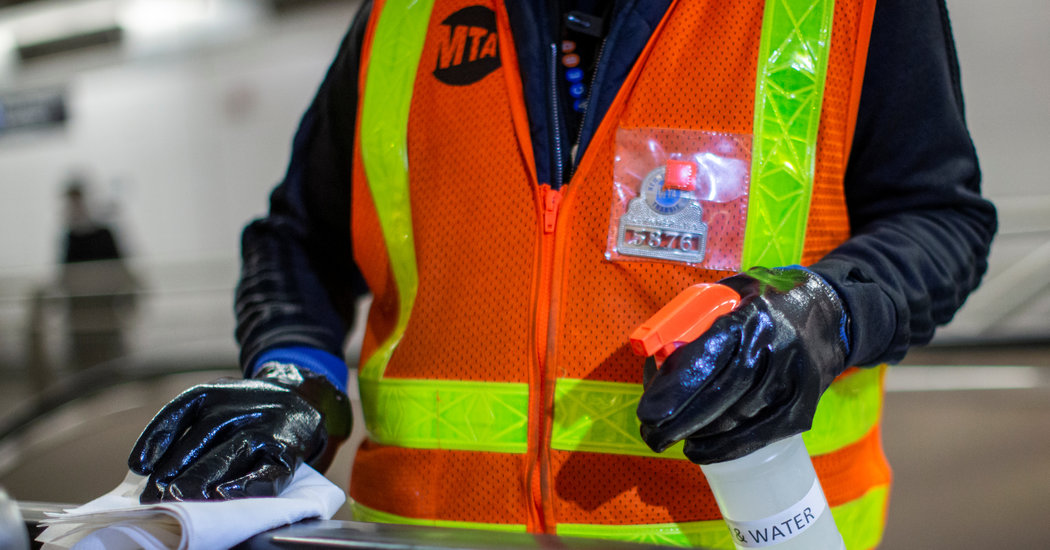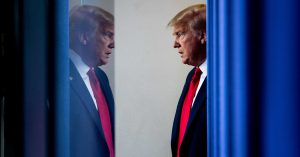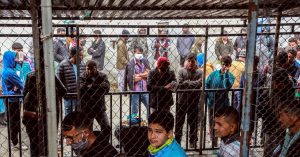Just a few months after the Sept. 11 attack, I joined the office of Mayor Michael Bloomberg of New York as deputy mayor for economic development and rebuilding, responsible for the city’s economic recovery. The predictions were dire. The New York Times warned of a return to the tough times of the 1970s, when austerity, crime and poverty led to a “plummet in the quality of life so sharp that people fled town.”
New York did recover from Sept. 11, defying expectations. While the coronavirus presents a very different threat, now that we are seeing some hopeful signs that the outbreak has started to peak, we can begin to think about the road to recovery, applying some of the key lessons from our experience after Sept. 11.
Compete on public health
Leadership matters in a crisis. On Sept. 11, Mayor Rudolph Giuliani vowed that “we’re going to rebuild, and we’re going to be stronger than we were before.” Mr. Bloomberg echoed that mandate in his inauguration speech just three months later. Leadership in the face of tragedy bound New Yorkers together in a common purpose and an unprecedented spirit of cooperation.
But confident talk must be backed up with concrete and sometimes symbolic action. Shortly after Sept. 11, we hosted the World Economic Forum, and near the first anniversary we held a concert in Times Square in partnership with the National Football League. The images of business and global leaders congregating in New York and of half a million people gathering in the city’s most famous square were tangible signs that we were open for business, safe for residents and visitors, and ready to move forward.
These efforts reflected a post-9/11 realization that we had to think of the city as a competitive entity for the jobs, residents and visitors needed to rebuild an economy. As we work to recover this time, a big part of restoring New York’s key competitive advantages will be its ability to rebuild public trust in the city — and in dense city life itself.
Just as the striking economic gains that New York experienced after Sept. 11 rested on the foundation of public safety, New York will need to become a global leader in public health, building on its leadership in medical care and research.
In the short term, people will need to see daily signs of New York’s health hygiene in action. That might include a visible rollout of public hand sanitizers, mask distribution, temperature checks or any other measures to restore confidence that crowded spaces are safe spaces. It will also be critical for transit officials to ensure sanitized trains and buses, and reduce crowding, perhaps working with corporate leaders to stagger business hours (which helped New York during the 1918 flu epidemic).
Confidence in density also requires an intensified and visible focus on pandemic preparation. That means continuing to stockpile protective equipment, building a robust testing infrastructure and advancing current efforts to work across departments — recognizing that the next outbreak may be different.
Technology will play a role, but our approach will have to start with a robust framework for data governance, ensuring that people don’t have to choose between their health and their privacy.
From there, the city could use technology to collect data that helps public health officials detect and track outbreaks in a privacy-preserving way, potentially including platforms for self-reporting symptoms. We could also support health technology that helps people care for themselves and their loved ones, such as virtual care programs that connect high-risk or sick individuals with clinical support.
Develop a strategy for inclusive, sustainable and resilient growth
Another enduring lesson of Sept. 11 is that a financial downturn can be a spectacular opportunity to transform the city’s economy.
After the attack, we took a long look at the city’s competitive strengths and weaknesses, and developed a five-borough strategy for economic growth, which included diversifying the economy away from financial services, providing new transportation options, investing in long-overlooked neighborhoods and outlining an ambitious municipal affordable housing plan.
As those plans moved ahead, confidence grew that the recovery was real, begetting more and more investment. Job growth in the city in the dozen years after Sept. 11 doubled the national average and the population grew by 300,000 residents, enabling large increases in public spending on education, health care, homelessness, parks and many other key city services.
Even before the coronavirus struck, New Yorkers were demanding a different growth model than the one we used after Sept. 11 — one that paid greater attention to concerns about gentrification and the distribution of economic opportunity. We saw that play out in Amazon HQ2 and a number of proposed rezonings that have recently been defeated. Communities want more of a voice in decision-making. Add to that imperatives on affordable housing, climate action and now public health, and it seems apparent that to thrive after the pandemic, New York must become the global leader of inclusive, sustainable and resilient growth.
There is no good model for this, but innovations are available across every aspect of urban life to help if we are bold enough to use them.
For example, housing affordability is a clear area of weakness that must become a strength. That will be even truer after the coronavirus crisis, as more and more residents lose their jobs and can’t pay rent. A big part of why housing is so expensive is that buildings are so costly to construct.
Today we have the technology to significantly lower construction costs, as part of a holistic affordability plan. It’s now possible to make tall buildings out of wood and produce core building components in factories. There are large cost and speed advantages to this approach that can be shared between developers and tenants, or captured by cities for their own affordable housing programs.
There are also significant climate benefits to wood buildings, which could be an important element in an aggressive sustainability agenda. Such a strategy includes green policies and energy regulations, but we must also explore new private-sector clean technology solutions that can help the city achieve its climate goals.
Critically, going green must remain affordable. Solar panels and batteries can help store clean power, and advanced building energy systems can help deploy these sources during peak periods, when electricity use is both more carbon-intensive and expensive. Clean “thermal” grids can make a neighborhood less reliant on fossil fuels and help buildings share clean energy, further reducing costs.
Start the planning now
More important right now than the specific innovations is that we immediately begin a civic conversation that rapidly yields a strategy. The effort to develop PlaNYC, New York’s pathbreaking sustainability plan from 2007, could serve as a model. The Bloomberg administration and the City Council created a task force to develop the plan. At every step along the way, the public was involved.
We could adapt that approach to today’s crisis. It should be done by a consortium of local nonprofits, civic institutions, labor and business leaders, and presented to the new mayor and Council after the election in the fall of 2021. As with PlaNYC, the idea would be to identify actionable initiatives, with clear mandates and accountability, that can be achieved through innovative technological, regulatory, planning or financial approaches.
None of this will be easy. Bold civic action never is. But the thing that has always made New York unique is that it is a city of immigrants who have believed that life here was going to be better for themselves and their families. It is that collective optimism and resourcefulness that has enabled New York to overcome many crises. It isn’t too early to use this pandemic as a catalyst toward a more inclusive, sustainable and resilient future.
Daniel L. Doctoroff is CEO of Sidewalk Labs, Alphabet’s urban innovation company. He served as deputy mayor of New York from 2002 to 2008.
The Times is committed to publishing a diversity of letters to the editor. We’d like to hear what you think about this or any of our articles. Here are some tips. And here’s our email: [email protected].
Follow The New York Times Opinion section on Facebook, Twitter (@NYTopinion) and Instagram.



















